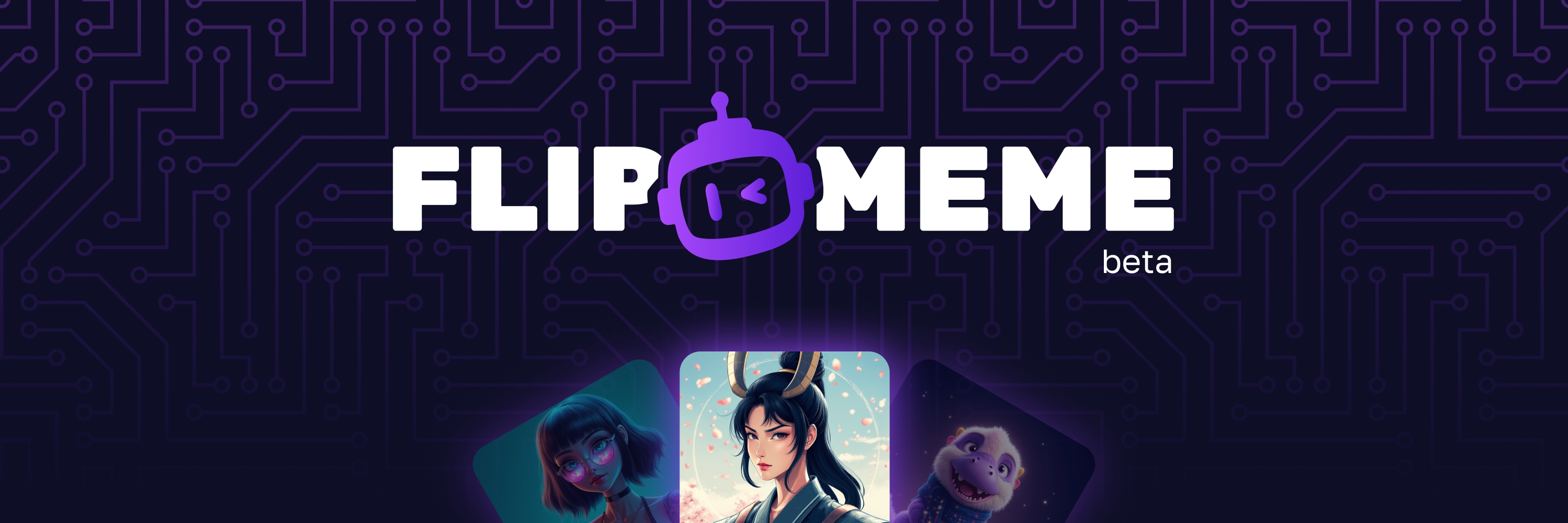💸Trading on flip.meme
Flipping NFTs—buying low and selling high—has never been easier than on flip.meme.
🟪 Understanding the Bonding Curve
You've found a high-potential NFT collection on flip.meme and want to become a holder? Fantastic, but first let's take a look at the bonding curve concept. Our bonding curve pricing model dictates how NFT prices evolve during the minting process. It’s a simple principle: as more NFTs from a collection are minted, prices increase. With the distinctive feature that minting pauses when already minted NFTs are sold into the liquidity pool, and resumes when they’re bought back.
In other words, our bonding curve algorithm defines the price according to offer and demand, guaranteeing a healthy and fair progression throughout the mint. This pricing mechanism encourages early participation by offering lower prices for early buyers, with increasing prices driving urgency as the collection progresses. Put another way, the earlier you buy, the more potential profit you can earn by flipping later in the process.
🟪 Buying NFTs
Once you’ve identified an NFT you want to buy, the next step is to mint it or purchase it from the liquidity pool. If an NFT from the collection you’re looking for has been minted and then added to the collection liquidity pool (i.e. sold by another flipper), that's the NFT you'll buy. But if no NFT from this collection has yet been added to the liquidity pool, you’ll mint a brand-new NFT. As a buyer, the process is the same.
To purchase the NFT you fancy, at the price displayed on flip.meme, you’ll need to use your Solana-compatible wallet. A small 2.5% fee will be applied to the transaction. Once purchased, the NFT is transferred to your wallet, and you’re ready to flip it for profit.
🟪 Flipping NFTs
If you’ve bought an NFT and are ready to sell, you can flip it into the liquidity pool before the collection is fully sold out. This is where the magic of our liquidity pool model comes into play: without waiting for a buyer, you can immediately exchange your NFT for the current bonding curve price.
Selling into the pool is a great way to take advantage of rising prices during the minting phase, especially if you bought your NFT at an earlier, lower price. Timing is key!
🟪 After The Collection Sold-out
Once a collection is fully sold out, trading moves from the liquidity pool to external platforms. NFTs are then automatically displayed on secondary marketplaces, which can increase their visibility and potential value. Holding onto your NFT until after the collection sells out could give you more profit opportunities in the broader marketplace.
To maintain price stability and liquidity, 85% of the liquidity gathered during the mint phase is used to support the collection price on secondary markets, through collection bids on Tensor. That said, NFTs can then be freely traded on all marketplaces supporting them.
Here’s how it works:
• 85% of the mint liquidity is instantly deployed on secondary markets (via Tensor) as collection-wide bids.
• These bids are placed at the exact same price as the last NFT minted.
• This creates a price floor backed by real capital — not just hype.
🧠 Example:
• Total supply: 1,000 NFTs
• Last mint at 1 SOL
• flip.meme deploys approx. 500 bids at 1 SOL on the entire collection
➡️ That’s 500 SOL in active buy pressure sitting just below the floor.
This forms a massive liquidity wall that defends the floor price and gives traders confidence to buy and flip, even post-mint.
Last updated
